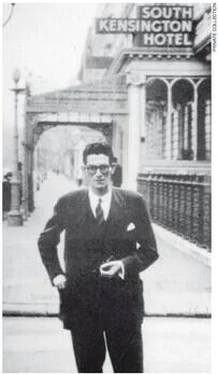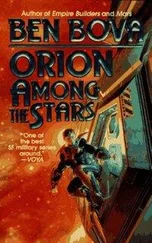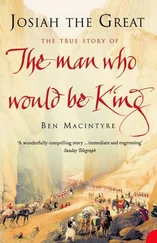Ben Macintyre - A Spy Among Friends
Здесь есть возможность читать онлайн «Ben Macintyre - A Spy Among Friends» весь текст электронной книги совершенно бесплатно (целиком полную версию без сокращений). В некоторых случаях можно слушать аудио, скачать через торрент в формате fb2 и присутствует краткое содержание. Год выпуска: 2014, ISBN: 2014, Издательство: Bloomsbury Publishing, Жанр: Старинная литература, на английском языке. Описание произведения, (предисловие) а так же отзывы посетителей доступны на портале библиотеки ЛибКат.
- Название:A Spy Among Friends
- Автор:
- Издательство:Bloomsbury Publishing
- Жанр:
- Год:2014
- ISBN:9781408851746
- Рейтинг книги:5 / 5. Голосов: 1
-
Избранное:Добавить в избранное
- Отзывы:
-
Ваша оценка:
- 100
- 1
- 2
- 3
- 4
- 5
A Spy Among Friends: краткое содержание, описание и аннотация
Предлагаем к чтению аннотацию, описание, краткое содержание или предисловие (зависит от того, что написал сам автор книги «A Spy Among Friends»). Если вы не нашли необходимую информацию о книге — напишите в комментариях, мы постараемся отыскать её.
A Spy Among Friends — читать онлайн бесплатно полную книгу (весь текст) целиком
Ниже представлен текст книги, разбитый по страницам. Система сохранения места последней прочитанной страницы, позволяет с удобством читать онлайн бесплатно книгу «A Spy Among Friends», без необходимости каждый раз заново искать на чём Вы остановились. Поставьте закладку, и сможете в любой момент перейти на страницу, на которой закончили чтение.
Интервал:
Закладка:
‘How long will you be away?’ Angleton inquired.
‘About a week,’ said Philby nonchalantly.
‘Can you do me a favour in London?’ asked Angleton, explaining that he needed to send an urgent letter to MI6, but had missed the diplomatic bag that week. Would Philby deliver it by hand? He pushed over an envelope, addressed to the head of counter-intelligence in London. Philby later imagined that this too had been a ruse of some sort, intended to test or trap him. Paranoia was beginning to gnaw. Angleton had no inkling of suspicion: his trusted friend would deliver the letter, and return in a week, when they would have lunch together as usual, at Harvey’s. After what Philby called ‘a pleasant hour’ at the bar, discussing ‘matters of mutual concern’, Philby boarded the night plane to London. He would never see America, or Jim Angleton, again.
Dark clouds of doubt were swiftly gathering, on both sides of the Atlantic, as Philby knew they would. These would soon blow up into a storm that would knock the ‘special relationship’ off course and set Britain’s secret services at each other’s throats. The Americans might appear unruffled, but the disappearing diplomats had provoked a ‘major sensation’ in Washington. An investigation was now under way focusing on Guy Burgess and, by association, his friend, protector and landlord, Kim Philby. CIA chief Walter Bedell Smith ordered any officers with knowledge of the British pair to relate what they knew of Philby and Burgess as a matter of urgency. The first report to arrive on the CIA chief’s desk came from Bill Harvey of counter-intelligence; the second, arriving a few days later, was written by James Angleton. They were markedly different documents.
Harvey’s report – ‘highly professional, perceptive and accusatory’ – was, in effect, a denunciation of Philby. The former FBI agent would later claim to have had his suspicions about Philby long before the Burgess and Maclean defections, and at the FBI he may have had access to the Venona material. Harvey had studied the Englishman’s career with meticulous care, and he drew together the strands of evidence with devastating precision over five closely typed pages: he noted Philby’s links with Burgess, his part in the Volkov affair, his involvement in the doomed Albanian operations, and his intimate knowledge of the hunt for the spy ‘Homer’, which had placed him in an ideal position to warn Maclean of his impending arrest. None of these alone amounted to proof of guilt, but taken together, Harvey argued, they pointed to only one conclusion: ‘Philby was a Soviet spy.’ Philby later described Harvey’s condemnation as ‘a retrospective exercise in spite’, personal revenge for the offence given to his wife at Philby’s disastrous dinner party just six months earlier.
The second report stood in stark contrast. Angleton described his various meetings with the drunken Guy Burgess, but he noted that Philby had seemed embarrassed by his friend’s antics, and explained them away by saying that Burgess had ‘suffered severe concussion in an accident which had continued to affect him periodically’. Angleton explicitly rejected any suggestion that Philby might have been in league with the defector, and stated his ‘conviction’ that whatever crimes Burgess might have committed, he had acted ‘without reference to Philby’. As one CIA officer put it, ‘the bottom line was . . . that you couldn’t blame Philby for what this nut Burgess had done’. In Angleton’s estimation, Philby was no traitor, but an honest and brilliant man who had been cruelly duped by a friend, who in turn had been rendered mentally unstable by a nasty bump on the head. According to Angleton’s biographer, ‘he remained convinced that his British friend would be cleared of suspicion’, and warned Bedell Smith that if the CIA started levelling unsubstantiated charges of treachery against a senior MI6 officer this would seriously damage Anglo-American relations, since Philby was ‘held in high esteem’ in London.
In some ways, the two memos echoed the different approaches to intelligence that were developing on opposite sides of the Atlantic. Bill Harvey’s reflected a new, American style of investigation, suspicious, quick to judge, and willing to offend. Angleton’s was written in the British MI6 tradition, based on friendship and trust in the word of a gentleman.
Harvey read Angleton’s memo, so different in tone and import from his own, and scrawled on the bottom, ‘What is the rest of this story?’ – in effect, accusing his fellow CIA officer of turning a blind eye to the truth. The disagreement between Harvey and Angleton over Philby sparked a feud that would last the rest of their lives. A similarly stark divergence of opinion was emerging within British intelligence.
On the afternoon of 12 June, Kim Philby arrived at MI5 headquarters in Leconfield House, off Curzon Street, feeling exhausted and ‘apprehensive’, but tensed and primed for the coming duel. The adrenal rush of danger had always stimulated him. Jack Easton insisted on accompanying him to the interview, as a supportive presence. The two MI6 men were greeted by Dick White, the chief of MI5 counter-intelligence, who, over the next few hours, would subject Philby to a grilling, thinly disguised as a friendly chat. Tea was served. A fug of tobacco smoke filled the room. Civilities were exchanged. Dick White (not to be confused with Richard Brooman-White, Elliott’s old friend) was a former schoolmaster, the son of a Kentish ironmonger, a frank, even-tempered and honourable man who would go on to head MI5, and then MI6. Philby had known White since the war, and had always got on well with him, while privately disparaging what he considered to be his meagre intellect and vacillating character. ‘He did his best to put our talk on a friendly footing,’ wrote Philby. The mood in the room was more embarrassed than confrontational. C had reluctantly agreed to allow one of his officers to be interviewed by MI5 on the understanding that Philby was aiding an inquiry, and ‘might have views on the case’. White was at pains to point out that Philby was there simply to help shed light on ‘this horrible business with Burgess and Maclean’. But, beneath the civilised veneer, cracks were appearing that would soon split one branch of British intelligence from the other.
MI6 was standing by its man. The files contained nothing to incriminate Philby, only accolades of mounting admiration leading up to his appointment in Washington. ‘There was no case against him at this time,’ recalled Easton. At most, he could be accused of indiscretion, for associating with a degenerate like Guy Burgess. But if that was a crime, many in the Foreign Office and secret services were equally guilty. Philby had not run away, he was happy to help, and he was, importantly, a gentleman, a clubman and a high-flier, which meant he must be innocent. Many of Philby’s colleagues in MI6 would cling to that presumption of innocence as an article of faith. To accept otherwise would be to admit that they had all been fooled; it would make the intelligence and diplomatic services look entirely idiotic. MI5, however, had been making inquiries, and already convivial, clubbable Kim Philby was beginning to take on a more sinister shape. The threads of suspicion identified by Bill Harvey in Washington were being pursued with even greater determination in London. In the weeks since the defections, a fat file had been assembled, and it now lay on White’s desk, just a few feet away from where Philby sat, sipping tea, smoking his pipe and trying to appear relaxed.
The conflicting attitudes towards Philby between the sister services of British intelligence would expose a cultural fault line that predated this crisis, long outlasted it, and persists today. MI5 and MI6 – the Security Service and the Secret Intelligence Service, broadly equivalent to the FBI and CIA – overlapped in many respects, but were fundamentally dissimilar in outlook. MI5 tended to recruit former police officers and soldiers, men who sometimes spoke with regional accents, and frequently did not know, or care about, the right order to use the cutlery at a formal dinner. They enforced the law and defended the realm, caught spies and prosecuted them. MI6 was more public school and Oxbridge; its accent more refined , its tailoring better. Its agents and officers frequently broke the laws of other countries in pursuit of secrets, and did so with a certain swagger. MI6 was White’s; MI5 was the Rotary Club. MI6 was upper-middle class (and sometimes aristocratic); MI5 was middle class (and sometimes working class). In the minute gradations of social stratification that meant so much in Britain, MI5 was ‘below the salt’, a little common, and MI6 was gentlemanly, elitist and old school tie. MI5 were hunters; MI6 were gatherers. Philby’s patronising dismissal of Dick White as ‘nondescript’ precisely reflected MI6’s attitude to its sister service: White, as his biographer puts it, was ‘pure trade’, whereas Philby was ‘establishment’. MI5 looked up at MI6 with resentment; MI6 looked down with a small but ill-hidden sneer. The looming battle over Philby was yet another skirmish in Britain’s never-ending, hard-fought and entirely ludicrous class war.
Читать дальшеИнтервал:
Закладка:
Похожие книги на «A Spy Among Friends»
Представляем Вашему вниманию похожие книги на «A Spy Among Friends» списком для выбора. Мы отобрали схожую по названию и смыслу литературу в надежде предоставить читателям больше вариантов отыскать новые, интересные, ещё непрочитанные произведения.
Обсуждение, отзывы о книге «A Spy Among Friends» и просто собственные мнения читателей. Оставьте ваши комментарии, напишите, что Вы думаете о произведении, его смысле или главных героях. Укажите что конкретно понравилось, а что нет, и почему Вы так считаете.












